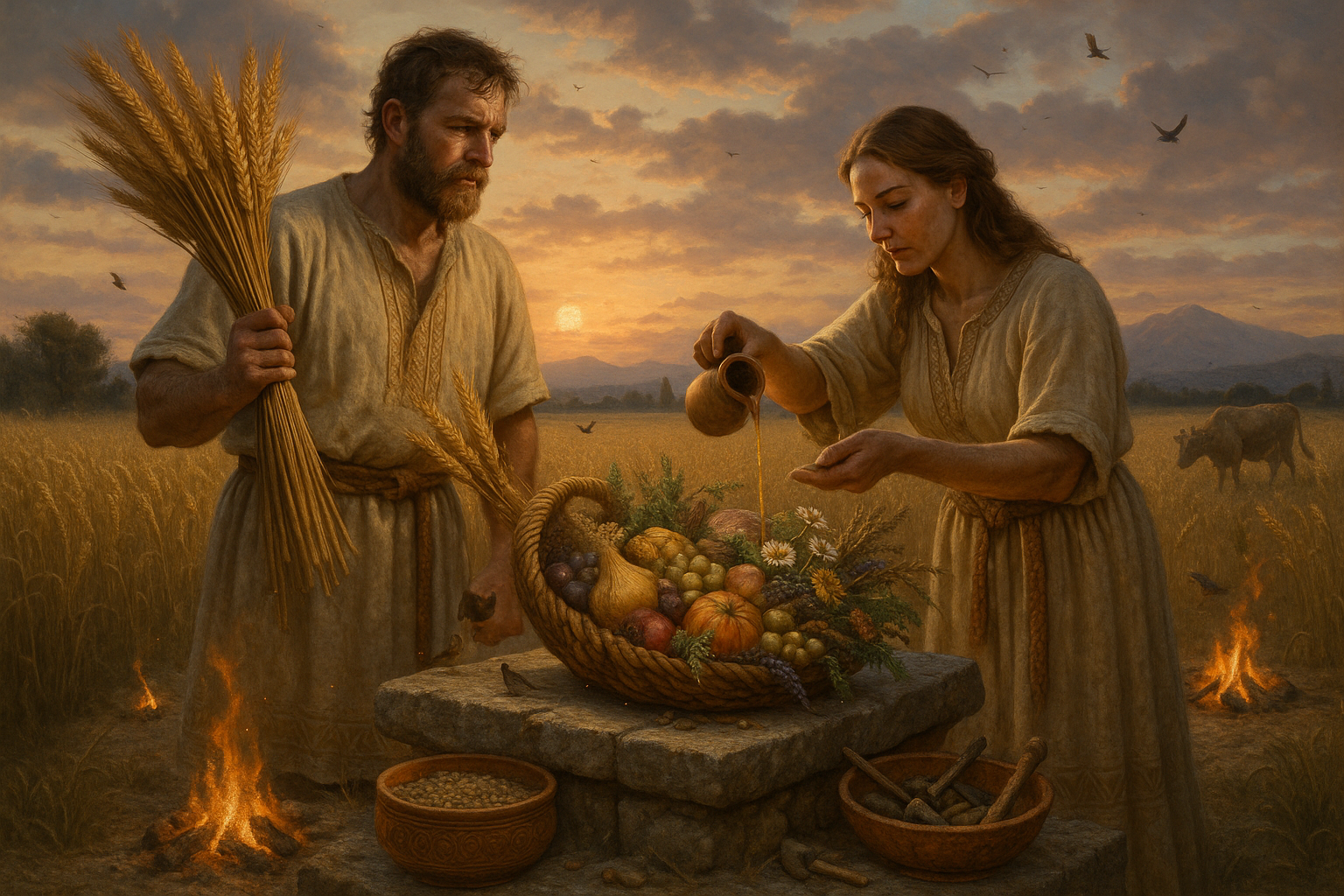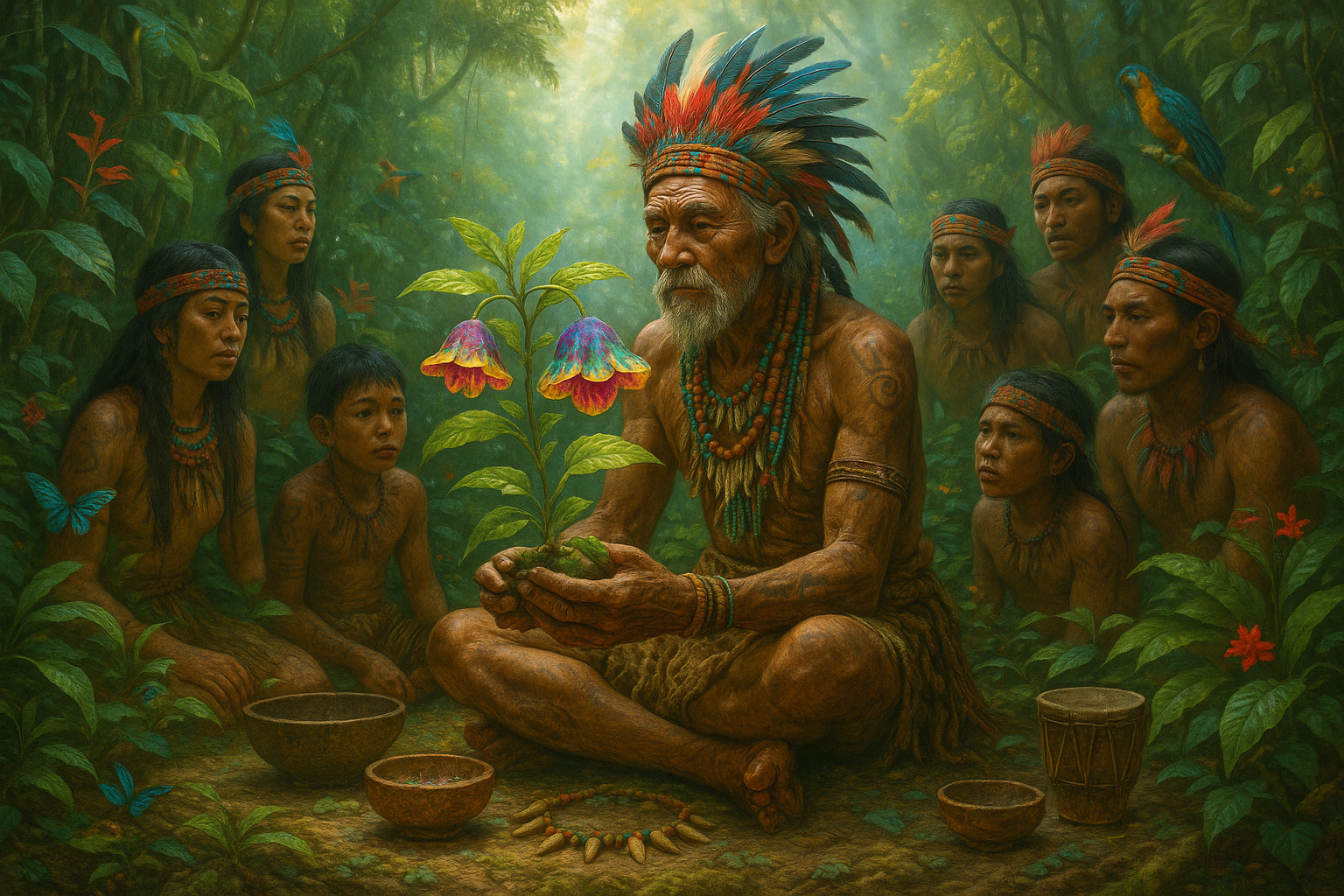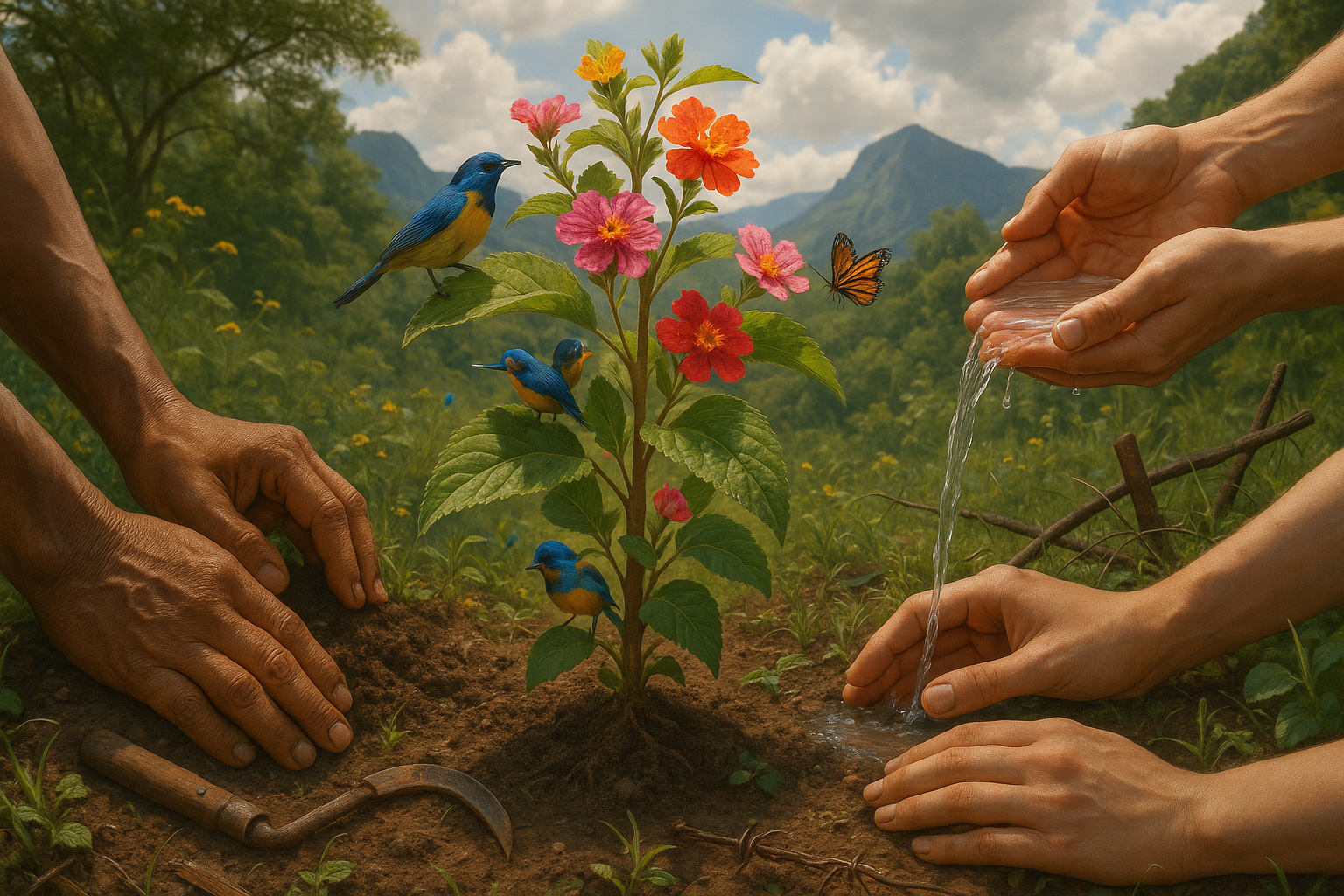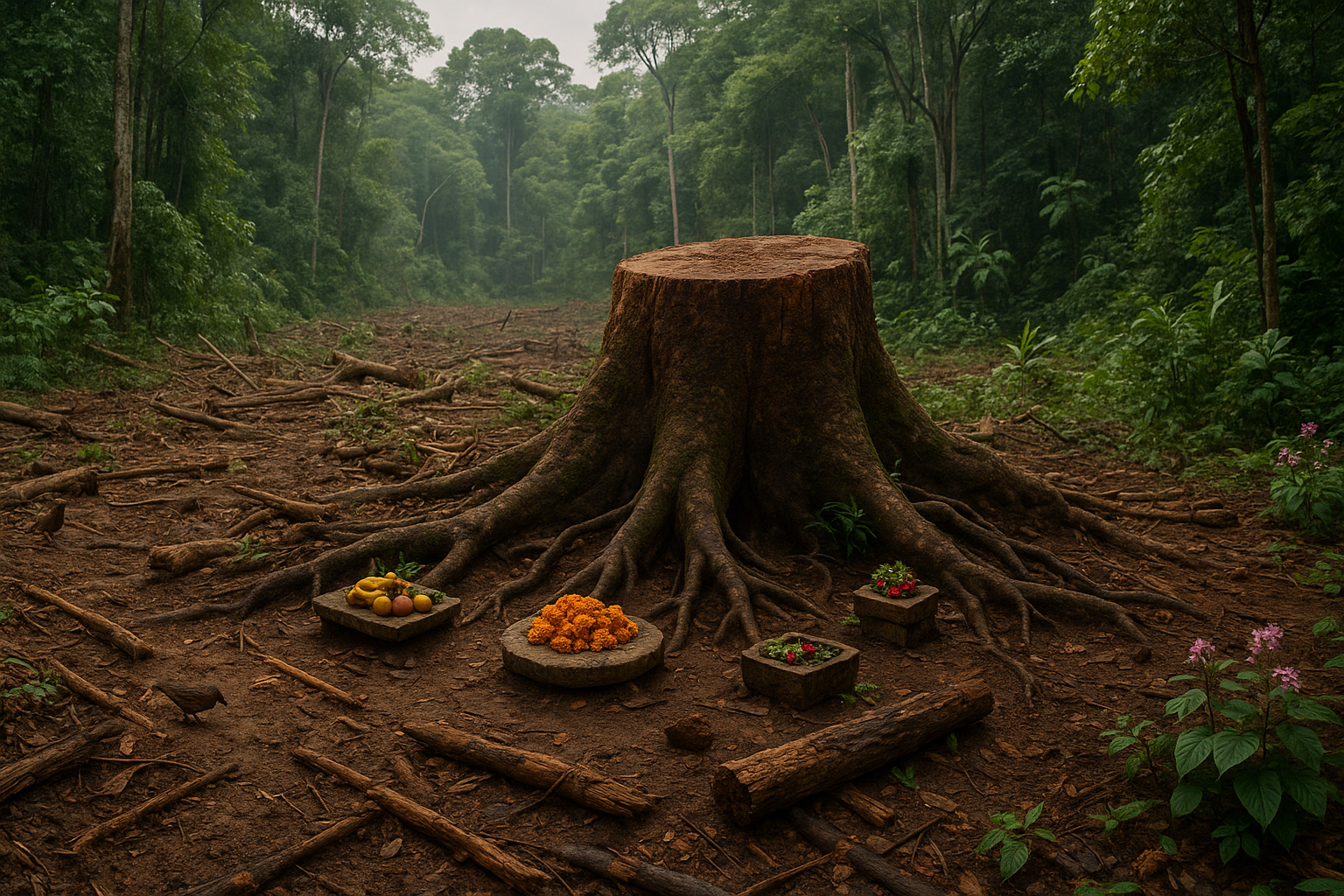In the whispers of the ancient world, where nature’s cycles dictated the rhythm of life, the practice of agriculture was more than mere survival—it was a sacred dance with the divine. Imagine standing in the midst of vast, undulating fields, where every seed sown was a prayer, every harvest a hymn of gratitude. 🌾 These were times when humanity looked to the earth not just for sustenance, but for a connection to something greater, something mystical. This profound relationship is beautifully encapsulated in the symbolic agricultural offerings that were integral to ancient rites.
The fertile crescent of human civilization has always been steeped in rituals that celebrate the bounty of the earth. These rituals, brimming with symbolism, reveal much about the societies that practiced them. They tell stories of hope, reverence, and an eternal quest for balance between humankind and nature. Through the lens of these ancient practices, we uncover a rich tapestry of cultural beliefs and religious observances that revered the earth as a sacred entity.
In this article, we will embark on a journey through time, exploring how ancient civilizations like the Egyptians, Greeks, and Mesopotamians wove agriculture into their spiritual fabric. We will delve into how they believed their offerings could invoke divine favor, ensuring plentiful harvests and prosperity. 🌱 As we unravel these practices, we’ll gain insights into the intricate relationships between human rituals and agricultural cycles, exploring how these have shaped the spiritual landscapes of ancient communities.
Our exploration begins with the Egyptians, whose civilization was intricately linked to the life-giving waters of the Nile. The river’s cyclical flooding was seen as the breath of gods, and the Egyptians believed that their offerings could influence these vital floods. We’ll examine how they used symbolic offerings in their rites to honor deities like Osiris, the god of agriculture and fertility, and how these practices were a means of ensuring harmony between humans and the natural world.
Next, we turn our gaze to the fertile plains of Mesopotamia, the cradle of civilization. Here, offerings to gods like Enlil and Ishtar were not merely acts of faith, but strategic rituals designed to curry favor and secure agricultural abundance. 🌾 The Mesopotamians’ meticulous rituals reveal a deep understanding of the seasonal cycles and a belief that human intervention, through offerings, could steer the natural order in their favor.
Moving westward, we encounter the ancient Greeks, whose pantheon of gods each played a role in the agricultural process. We’ll uncover how offerings to Demeter, the goddess of harvest, were a central aspect of Greek religious life. The Eleusinian Mysteries, shrouded in secrecy and reverence, are perhaps the most famous example of agricultural rites from this period. These mysteries emphasized the cycle of life and death, encapsulating the belief in rebirth and regeneration through the symbolic act of planting and harvesting.
As we traverse these ancient landscapes, our journey will also touch upon the fascinating role of symbolism in these offerings. From the choice of grains and fruits to the ceremonial acts of planting and harvesting, each element held profound meanings. By examining these symbols, we can decode the language of the ancients, uncovering how they communicated with the divine and expressed their deepest hopes and fears.
But why does this matter today? 🌍 In our modern world, where agriculture has become a mechanized, industrial affair, the ancient practice of offering to the earth seems like a relic of the past. Yet, these rituals hold enduring lessons. They remind us of the deep interconnection between humans and nature, urging us to foster a more sustainable and harmonious relationship with our environment.
As we conclude our introduction, prepare to immerse yourself in the rich history of symbolic agricultural offerings. This journey through time not only uncovers the spiritual practices of our ancestors but also invites us to reflect on our own relationship with the earth. As we explore these ancient rites, we’ll consider how they can inspire a more conscious and respectful approach to the world around us. Let us delve into the past to uncover wisdom that resonates with our present and shapes our future. 🌿

Conclusion
In exploring the profound influence of symbolic agricultural offerings in ancient rites, we have traversed a landscape rich with cultural heritage, spiritual depth, and communal cohesion. From the intricate rituals that defined ancient societies to the symbolic meanings that these practices held, our journey sheds light on a fascinating aspect of human history. This exploration is not merely an academic exercise but a gateway to understanding how ancient peoples interacted with their environment, cultivated their spirituality, and fostered social bonds. 🌾
Throughout this article, we have identified several key points. Firstly, the role of agriculture in ancient societies was not solely economic but deeply entwined with religious and spiritual practices. Crops were more than sustenance; they were offerings to deities and spirits, believed to ensure fertility and prosperity. This underscores a fundamental aspect of human culture: the interdependence of the tangible and the intangible, where physical acts of cultivation are imbued with spiritual significance.
Secondly, we discussed the symbolism inherent in agricultural offerings. These rituals were not arbitrary; each plant, each method of offering held specific meanings. This symbolism often reflected the society’s understanding of life, death, and rebirth, mirroring the cycles of nature. The agricultural calendar itself became a framework for ceremonial life, guiding communities through the changing seasons and reinforcing communal bonds through shared traditions.
Furthermore, we explored how these practices served to reinforce social structures and hierarchies. The responsibility for conducting these rituals often fell to specific individuals or groups, such as priests or chieftains, highlighting the intersection of spiritual authority and political power. The communal nature of these rites also fostered a sense of unity and shared purpose, vital for the survival and cohesion of ancient communities.
The importance of these findings lies not just in understanding the past but in recognizing the enduring legacy of these practices. In an era where modern agriculture often prioritizes efficiency over cultural significance, revisiting these ancient rites can inspire a more holistic approach to how we interact with the land. By acknowledging the spiritual dimensions of agriculture, we can foster a deeper connection to the earth and promote sustainable practices that honor both our cultural heritage and the environment.
We encourage you, dear reader, to reflect on how these ancient practices resonate in today’s world. How might we integrate the wisdom of the past into our modern lives? Can we find ways to celebrate and honor the cycles of nature within our communities? As we move forward, let us carry with us the understanding that our relationship with the earth is a vital part of our identity, one that deserves to be nurtured and celebrated. 🌍
Feel inspired to dive deeper into this topic? We invite you to explore more about the significance of ancient agricultural rites through various resources. Here are some recommended links for further reading:
- Britannica: Agriculture in Ancient Civilizations
- History.com: Prehistoric Agriculture
- Archaeology Magazine: Ritual Feasting in the Ancient World
Your thoughts and perspectives are invaluable. Please share your insights or experiences in the comments below. Engage with others, share this article with friends, or consider how you might apply these ancient insights to enrich your own relationship with the earth. Together, we can cultivate a deeper appreciation for the traditions that shaped our world and continue to inspire us today. 🌱
Thank you for joining us on this exploration of ancient rites and agricultural offerings. May your journey be fruitful and your path ever in tune with the rhythms of nature. 🙏
Toni santos is a cultural storyteller and botanical history researcher devoted to uncovering the hidden narratives of cryptobotany and lost plant lore. With a lens focused on forgotten flora, Gabriel explores how ancient communities discovered, used, and ritualized plants — seeing them not merely as resources, but as vessels of meaning, identity, and ancestral memory.
Fascinated by mythical plants, vanished species, and secret ethnobotanical knowledge, Gabriel’s journey weaves through herbal manuscripts, oral traditions, and forgotten botanical practices passed down in fragments. Each story he tells is a reflection on the power of plants to heal, connect, and preserve cultural wisdom across time.
Blending ethnobotany, folklore studies, and cultural storytelling, Gabriel researches the plants, uses, and rituals that once shaped societies — uncovering how lost plant lore reveals deep interconnections between belief, nature, and survival. His work honors the healers, shamans, and herbalists who safeguarded this knowledge beyond the reach of written history.
His work is a tribute to:
-
The sacred role of plants in ancestral rituals
-
The beauty of forgotten botanical knowledge and uses
-
The enduring link between nature, culture, and myth
Whether you are passionate about ancient herbal traditions, curious about plant folklore, or intrigued by the mysteries of cryptobotany, Gabriel invites you on a journey through green lore and living memory — one plant, one ritual, one story at a time.





